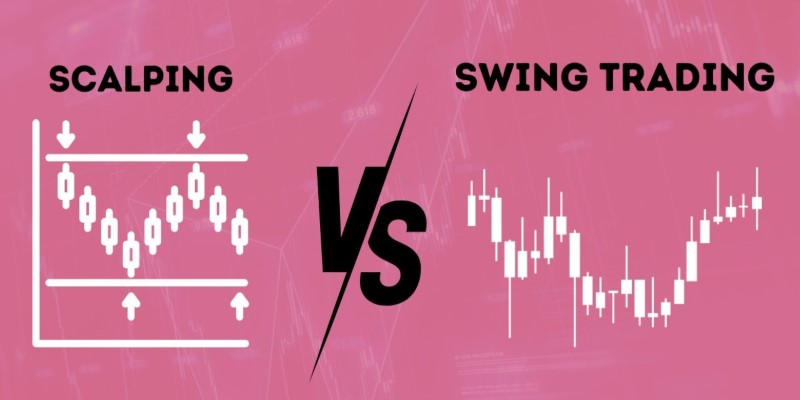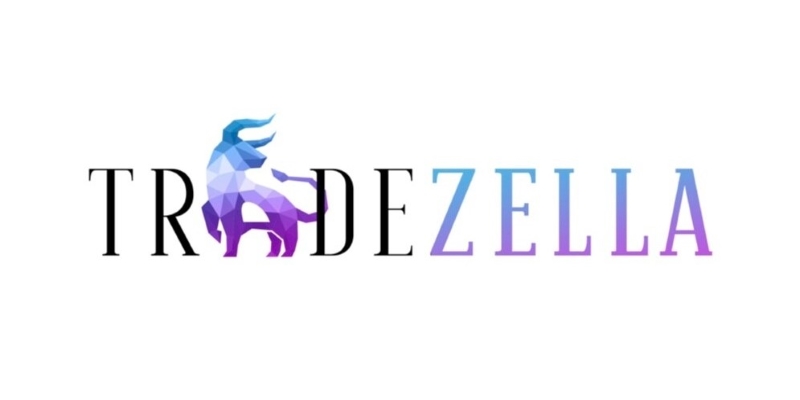Choosing Between Scalping and Swing Trading: Key Differences Explained
Aug 27, 2024 By Darnell Malan
When it comes to trading in the financial markets, the strategies you choose can significantly impact your outcomes. Two of the most popular methods, scalping, and swing trading, cater to different styles of traders based on their risk tolerance, market approach, and time commitment.

While scalping focuses on making small profits over a large number of trades, swing trading takes a more measured approach, aiming to capitalize on medium-term price movements. Understanding the difference between these two strategies can help you choose the one that best suits your financial goals and trading style.
What is the Difference Between Scalping and Swing Trading?
Scalping and swing trading are both effective yet distinct methods for trading financial markets like stocks and forex. The primary difference lies in the timeframe and approach traders use. Scalping is a fast-paced strategy where traders aim to make profits from very short-term price fluctuations. Typically, scalpers hold positions for just a few seconds or minutes, executing dozens or even hundreds of trades a day. The goal is to accumulate small, consistent gains that add up over time.
Swing trading, on the other hand, takes a more relaxed approach. Swing traders hold positions for several days to a few weeks, seeking to profit from price swings in the market. Rather than focusing on small movements, swing traders aim to capture more significant price shifts, which often occur as a result of broader market trends or significant news events. This longer timeframe allows swing traders to make fewer trades and spend less time monitoring the markets than scalpers.
Scalping vs. Swing Trading
To better understand these strategies, lets break down the differences in key areas such as time commitment, risk management, profitability, and trading tools.
Time Commitment:

Scalping requires continuous attention to the market, as traders need to be prepared to enter and exit positions in a matter of seconds. This makes scalping more suited to full-time traders who can dedicate several hours a day to trading. In contrast, swing trading is less time-intensive. Swing traders analyze charts and news to identify trends but only need to check the market a few times a day. This makes swing trading more suitable for part-time traders who may have other responsibilities.
Risk and Reward:
Scalping and swing trading both involve risks, but the nature of these risks differs. Scalping, due to its rapid pace, requires traders to have strict stop-loss orders in place, as even a slight market move against the trade can wipe out gains. Scalpers aim for tiny profits, which means they often need a high win rate to be consistently profitable. On the other hand, swing traders can afford to be more patient. They often set wider stop-loss levels and target more substantial profits per trade, which means they can still be profitable even with a lower win rate.
Profitability:
Both strategies can be profitable, but they require different skill sets. Scalping demands precision, quick decision-making, and the ability to remain calm under pressure. Profits come from accumulating many small gains throughout the day. Swing trading requires a good understanding of market trends and technical analysis. Because trades are less frequent and aim for larger profits per trade, swing traders focus more on market timing and trend identification.
Trading Tools and Indicators:
Scalpers rely heavily on technical indicators like moving averages, Bollinger Bands, and volume analysis. Speed and accuracy are crucial, so scalping is often done using advanced trading platforms with direct market access. Swing traders also use technical analysis but are more likely to incorporate fundamental analysis and news events into their strategy. Swing traders might focus on trend indicators like the Relative Strength Index (RSI) or Moving Average Convergence Divergence (MACD) while paying close attention to economic reports and earnings announcements.
Emotional Discipline and Stress Management:

Scalping requires intense focus and quick decision-making under pressure, leading to high stress. The rapid pace demands constant attention, with little room for error. Scalpers need strong emotional discipline to stay composed despite frequent small trades and quick market shifts. Swing trading, however, offers more time for analysis and decision-making, reducing day-to-day stress. Although swing traders face the anxiety of holding positions overnight and during market volatility, the overall pace is more relaxed. Those who thrive in fast, high-pressure environments may prefer scalping, while swing trading suits those seeking a more measured, strategic approach.
Benefits of Scalping vs Swing Trading
Both scalping and swing trading come with unique advantages, depending on what you value in a trading strategy.
Benefits of Scalping:
Scalping is ideal for traders who thrive in high-energy environments and prefer constant action. The biggest benefit of scalping is the ability to generate consistent profits throughout the trading day. Since trades are quick, a bad trade can often be countered with a good one within minutes. Additionally, scalping minimizes exposure to overnight risk, as positions are typically closed by the end of the day. For traders with a solid strategy and discipline, scalping can offer a steady income with less reliance on long-term market trends.
Benefits of Swing Trading:
Swing trading is more suited to those who prefer a slower pace and have other commitments. The major advantage is flexibility. Swing traders dont need to be glued to their screens all day, making it a viable strategy for part-time traders. Additionally, swing trading allows for bigger potential profits per trade since it capitalizes on larger market movements. Swing trading also provides more time for analysis and decision-making, which can be beneficial for traders who rely on technical and fundamental research.
Conclusion
Scalping and swing trading are both effective strategies, but they cater to different types of traders. Scalping is more fast-paced and demands a significant time commitment and strong discipline. It offers quick returns but requires precision and quick reactions. On the other hand, swing trading is a more relaxed approach, offering flexibility and aiming for larger profits over a longer period. Swing traders can make decisions with a broader perspective, focusing on market trends and news events.
Ultimately, the choice between scalping and swing trading depends on your personal trading goals, lifestyle, and risk tolerance. If you enjoy the thrill of fast-paced action and can dedicate significant time to trading, scalping might be your best fit.

Synchrony Home Credit Card: 8 Key Points That Could Influence Your Decision

Harnessing the Power of the Paceline Card: 8 Key Insights

Bank Guarantee vs Letter of Credit: Understanding the Differences

Exploring the Benefits: Should You Get the World of Hyatt Credit Card?

Cash Flow Statement: Explanation and Example

Understanding Range Bar Charts and Their Role in Forex Trading

Umar Ashraf: Founder of TradeZella and His Vision for the Future

Vanco Payment Solutions: A Comprehensive Review and Top Alternatives

An Honest Review of PowerX Optimizer for 2024
